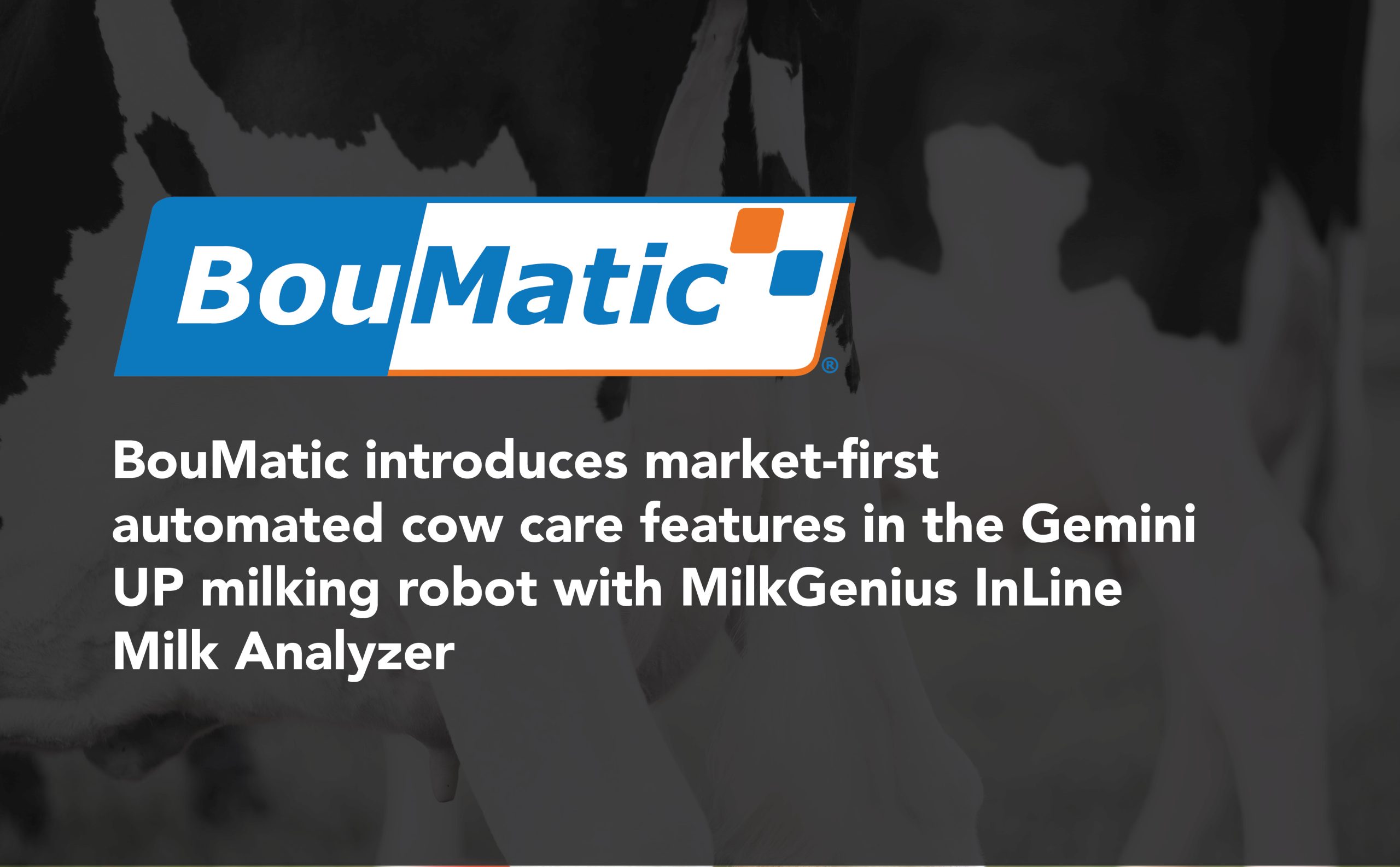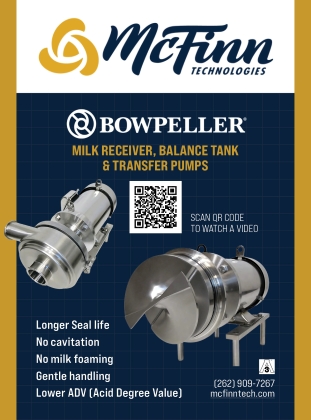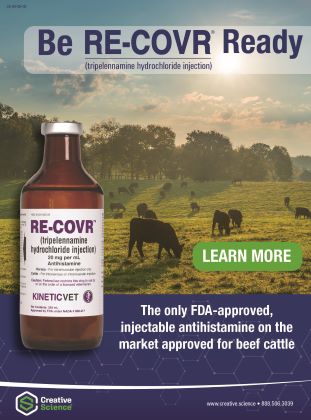BouMatic Introduces Market-First Automated Cow Care Features in the GeminiUP Milking Robot with MilkGenius InLine Milk Analyzer

BouMatic introduces market-first automated cow care features in the Gemini UP milking robot with MilkGenius InLine Milk Analyzer
MilkGenius InLine Milk Analyzer now acts on (sub)clinical ketosis and provides intelligent mastitis indication—first in the market to offer this breakthrough.
Madison – USA, 19 December 2025 BouMatic, a global pioneer in dairy innovation, unveils a major upgrade to its Gemini UP milking robot, equipped with the MilkGenius InLine Milk Analyzer. Two groundbreaking feature’s introductions, that redefine herd health management. For the first time, dairy farmers can rely on a system that not only detects metabolic disorders but also acts automatically, while providing smart mastitis indications based on advanced data analysis.
From Detection to Action: Automated Response to Negative Energy Balance

Until now, MilkGenius was a diagnostic tool, alerting farmers to issues such as (sub)clinical ketosis. With this upgrade, it becomes an active solution. When MilkGenius detects a cow that tends to suffer from (sub)clinical ketosis due to a negative energy balance, it immediately initiates treatment without human intervention. Extra energy supplements are delivered directly to the cow’s feeding trough, using BouMatic’s liquid feed dispenser system, which is an existing option in the Gemini UP milking robot.
This innovation eliminates manual treatment, which is often labor-intensive and potentially dangerous for the farmer or their staff, and removes the need for farmers to analyze data themselves. The integrated software makes real-time decisions based on the parameters that the farmer has configured for his herd, ensuring rapid response and quick recovery before the cow’s condition deteriorates. Unlike preventive treatments for all fresh cows, in case the farmer equipped their milking robot(s) with liquid feed dispensers, this targeted approach treats only cows that need support and stops automatically when recovery is confirmed—saving time and money.
BouMatic is the first company in the market to offer this fully automated metabolic disorder response system.
Smarter Mastitis Likelihood Score with BouMatic Herdline
 The second feature addresses mastitis, one of the most costly challenges in dairy farming. The upgraded BouMatic HerdLine App provides a mastitis indication, including a score—indicating the likelihood of the mastitis warning. The indication with it’s score is based on multiple milk parameters, including conductivity per quarter, milk yield, fat-, protein-, lactose percentages and milk temperature.
The second feature addresses mastitis, one of the most costly challenges in dairy farming. The upgraded BouMatic HerdLine App provides a mastitis indication, including a score—indicating the likelihood of the mastitis warning. The indication with it’s score is based on multiple milk parameters, including conductivity per quarter, milk yield, fat-, protein-, lactose percentages and milk temperature.
Instead of requiring farmers to interpret these data points manually, BouMatic HerdLine analyzes them and suggests a diagnosis, guiding farmers toward effective examination and treatment. This saves time, improves accuracy, and helps prevent costly delays.
A new era in automated dairy management
“BouMatic has always been committed to making dairy farming smarter, safer, and more profitable,” said Steve Pretz, CEO of BouMatic. “With these new MilkGenius features, we’re not just detecting problems—we’re solving them automatically. This is a game-changer for herd health and farm efficiency.”
The combination of the MilkGenius InLine Milk Analyzer and the Gemini UP milking robot delivers a fully automated solution for milking and herd health management. Gemini UP ensures efficient robotic milking, while MilkGenius monitors milk quality and cow health in real time and acts immediately when issues arise. Together, they optimize milking routines and proactively address metabolic disorders and mastitis risks—without extra labor or hardware.
This upgrade blends automation and intelligence, giving farmers peace of mind and more time to focus on their business. By treating cows only when needed and providing actionable health insights, MilkGenius improves animal welfare, operational efficiency, and profitability.
Available Now
These new features are available to all existing and new MilkGenius users.



